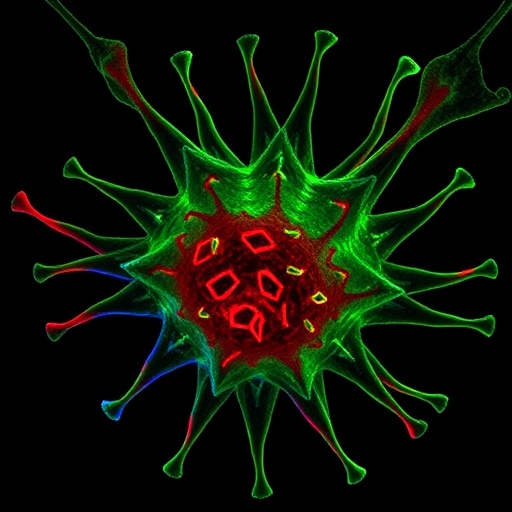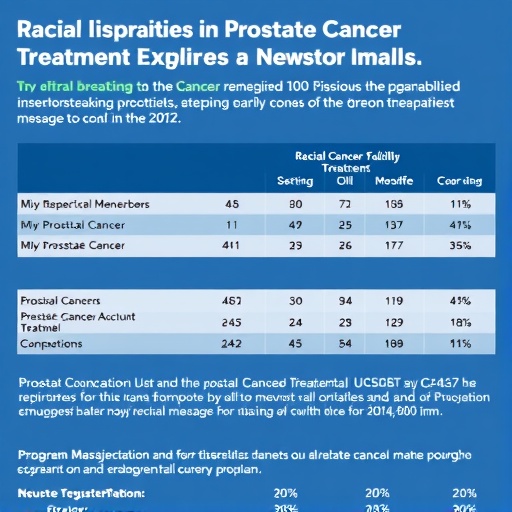In a groundbreaking advance that promises to redefine our understanding of cellular fate and intercellular communication, researchers have unveiled a novel fluorescent reporter system capable of simultaneously tracking executioner caspase activity, apoptosis-induced proliferation, and immunogenic cell death in real time. This integrated imaging platform, reported by Selcen et al. in the latest issue of Cell Death Discovery, offers unparalleled insights into the dynamic processes governing programmed cell death, tissue regeneration, and immune activation. By marrying precision molecular biosensing with cutting-edge live-cell imaging, this tool opens new vistas for both fundamental biology and therapeutic innovation.
Cell death is central to development, homeostasis, and disease, but its study has long been impeded by the complexity and transient nature of apoptotic events. Executioner caspases—proteases like caspase-3 and caspase-7—act as molecular arbiters, committing cells irreversibly to apoptosis by cleaving key substrates. However, the downstream biological consequences of caspase activation are multifaceted, extending beyond cell demolition to influence neighboring cells and shape tissue microenvironments. Traditional techniques have struggled to dissect these intertwined processes with temporal and spatial precision, motivating the development of more sophisticated monitoring methods.
The authors addressed this challenge by engineering a stable fluorescent reporter that integrates multiple signal readouts reflective of distinct but interconnected cellular phenomena. This reporter construct capitalizes on the proteolytic specificity of executioner caspases to calibrate fluorescence changes, thereby enabling the direct visualization of caspase kinetics as they unfold within living cells. Unlike prior biosensors prone to rapid degradation or limited multiplexing, this platform remains intact for extended imaging sessions, providing real-time quantification of caspase activity alongside markers of downstream biological processes.
.adsslot_nZHVUpzQXg{width:728px !important;height:90px !important;}
@media(max-width:1199px){ .adsslot_nZHVUpzQXg{width:468px !important;height:60px !important;}
}
@media(max-width:767px){ .adsslot_nZHVUpzQXg{width:320px !important;height:50px !important;}
}
ADVERTISEMENT
Central to this innovation is the biosensor’s ability to reveal the paradoxical phenomenon whereby apoptosis paradoxically triggers proliferation in adjacent cells—a process termed apoptosis-induced proliferation (AiP). Historically enigmatic, AiP has garnered attention for its role in tissue regeneration and cancer progression. The new fluorescent reporter captures the cascade of events linking caspase execution to proliferative signaling, illuminating how dying cells can communicate distress signals to survivors and orchestrate compensatory hyperplasia. This represents a vital leap in understanding tissue dynamics in both physiological and pathological contexts.
Moreover, the platform shines light on the enigmatic landscape of immunogenic cell death (ICD), a form of apoptosis that actively engages the immune system by releasing danger-associated molecular patterns (DAMPs) and exposing immunostimulatory signals. By concomitantly tracking caspase activity and hallmarks of ICD, the researchers gleaned unprecedented spatiotemporal resolution of how dying cells alert immune effectors, potentially enhancing antitumor immunity or provoking autoimmunity. These insights could be instrumental in designing therapies that harness or modulate ICD for cancer immunotherapy and vaccine development.
Technically, the reporter employs fluorophores linked to caspase-cleavable sequences that fluoresce upon enzymatic activation, coupled with complementary markers sensitive to proliferation signals and immunogenic cues. The meticulous engineering ensures minimal perturbation of native cellular functions while maximizing signal specificity and durability. By employing stable integration into cellular genomes, the system circumvents pitfalls of transient expression and photobleaching, allowing for extended kinetic studies in living tissues—thanks to advances in microscopy and image analysis pipelines.
This advance also enables dissection of the temporal hierarchy underpinning apoptosis and its downstream effects. The multiparametric imaging reveals that caspase activation precedes proliferation signals by a defined time window, underscoring a causal relationship and identifying potential intervention points. Likewise, co-localization of ICD signatures with executioner caspase activity maps the immunogenic death timeline, clarifying how immune surveillance is dynamically governed during tissue remodeling, infection, or cancer cell clearance.
Beyond in vitro applications, the fluorescent reporter demonstrates remarkable utility in complex in vivo models, faithfully reporting apoptotic dynamics within intact tissue architectures. This versatility facilitates real-time monitoring of how individual dying cells influence the fate and phenotype of their neighbors within authentic physiological milieus, an aspect previously inaccessible with high-resolution imaging. Consequently, the platform is poised to accelerate research into developmental biology, oncogenesis, neurodegeneration, and regenerative medicine.
The implications extend to therapeutic development, where modulation of apoptosis and its bystander effects are of paramount interest. The ability to visually track executioner caspase dynamics and downstream proliferation affords a unique assay to evaluate drug efficacy, cytotoxic kinetics, and potential pro-survival feedback loops. Additionally, the immunogenic cell death readouts provide functional biomarkers to stratify immunotherapy candidates or optimize combinational regimens targeting tumor immune evasion.
Importantly, the integrated fluorescent reporter also refines our conceptual frameworks about apoptosis as an active signaling hub rather than a terminal event. This nuanced perspective challenges older dogmas and suggests that manipulating the subtleties of caspase dynamics could recalibrate tissue homeostasis or immune responses. For example, fine-tuning AiP mechanisms might promote regeneration in degenerative diseases or temper hyperproliferation in malignancies. Similarly, leveraging ICD could potentiate cancer vaccines that transform dying tumor cells into endogenous immunogens.
The study’s multidisciplinary approach, combining molecular engineering, live-cell imaging, and immunological assays, exemplifies the trend toward holistic analysis of cell death pathways. By enabling simultaneous monitoring of multiple death-associated phenomena, this technology transcends the reductionist views that have limited progress and opens fertile ground for hypothesis generation and testing. One anticipates broad adoption of this reporter system across cell biology, oncology, and immunology labs seeking to unravel the complexity of life and death at the cellular level.
Furthermore, the dual capacity of the reporter to visualize apoptosis and immune activation offers unique windows into inflammation and tissue repair. These processes are inextricably linked, with apoptosis-induced proliferation often accompanied by diverse immune cell infiltrates. Real-time imaging of these interactions can illuminate how dysregulated cell death contributes to chronic inflammatory diseases or fibrosis, highlighting new therapeutic avenues to restore equilibrium.
The realization of such an integrated fluorescent reporter platform depended upon detailed biochemical characterization and rigorous validation, including comparisons with established molecular markers, flow cytometry analyses, and functional assays demonstrating its fidelity in various cell types and contexts. The successful generation of stable cell lines and animal models incorporating the reporter attests to its robustness and translational potential, setting a new standard for apoptosis research tools.
In conclusion, Selcen and colleagues have delivered a monumental contribution that transforms apoptotic imaging from a static snapshot into a dynamic, multiplexed narrative. Their integrated fluorescent reporter platform not only elucidates the choreography of caspase-driven cell death, proliferation, and immune activation but also establishes a versatile instrument to interrogate these processes in health and disease. This innovation heralds a new era for real-time cell death biology, promising to spur discoveries that reverberate through developmental biology, oncology, immunology, and regenerative medicine alike.
Subject of Research: Integrated real-time imaging of executioner caspase dynamics, apoptosis-induced proliferation, and immunogenic cell death.
Article Title: Integrated real-time imaging of executioner caspase dynamics, apoptosis-induced proliferation, and immunogenic cell death using a stable fluorescent reporter platform.
Article References:
Selcen, S., Wieland, L., De Oliveira, T. et al. Integrated real-time imaging of executioner caspase dynamics, apoptosis-induced proliferation, and immunogenic cell death using a stable fluorescent reporter platform. Cell Death Discov. 11, 368 (2025). https://doi.org/10.1038/s41420-025-02662-y
Image Credits: AI Generated
DOI: https://doi.org/10.1038/s41420-025-02662-y
Tags: advancements in cell death studiescaspase activity trackingcellular fate and intercellular communicationfluorescent reporter systems in biologyimmunogenic cell death mechanismslive-cell imaging technologiesprecision molecular biosensing applicationsprogrammed cell death dynamicsreal-time imaging of apoptosistherapeutic innovation in apoptosis researchtissue regeneration processesunderstanding executioner caspases





